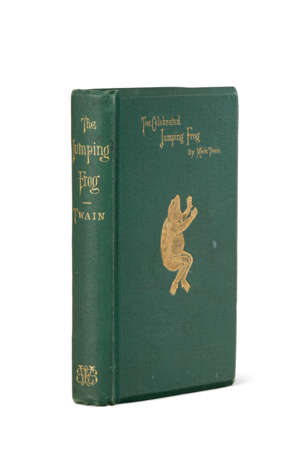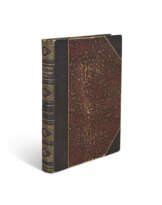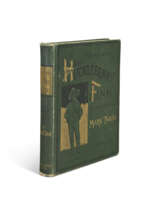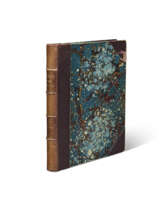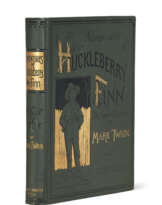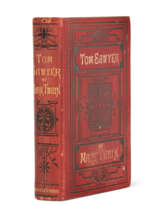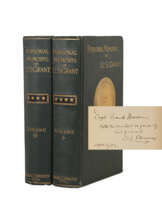ID 967594
Lot 149 | The Celebrated Jumping Frog of Calaveras County
Estimate value
$ 20 000 – 30 000
Mark Twain, 1867
CLEMENS, Samuel (“Mark Twain,” 1835-1910). The Celebrated Jumping Frog of Calaveras County, and Other Stories. Edited by John Paul [Charles Henry Webb]. New York: John A. Gray & Green for C.H. Webb, 1867.
Fine first edition of Twain's first book, the first issue in the most desirable green cloth with variant frog which "jumps" across the cover. With the leaf of ads and unbroken type on pages 21, 66 and 198. Twain’s first book is the “first important foreshadowing of crime-in-the-ascendancy in the short story ... This acknowledged classic of legend and folklore is an early example of the confidence game in fiction. If this statement surprises you, reread Mark Twain’s tale of trickery and ask yourself: When the slick stranger filled Jim Smiley’s frog, Dan’l Webster, full of quail-shot, wasn’t he really playing a clever skin game?” (Queen's Quorum 7). A fine copy of a fragile volume rarely found in fine condition. BAL 3310; Johnson Mark Twain 3; Seven Gables First Books 58; Zamorano Eighty 17.
12mo. One-page publisher's advertisement at front. Original green beveled cloth, with gilt frog in center of front cover, and same position in blind on back cover, gilt-lettered on front cover and spine, brown coated endpapers (light rubbing at extremities); modern box. Provenance: Library of an English Bibliophile (Sotheby's New York, 20 October 2011, lot 14).
| Artist: | Mark Twain (1835 - 1910) |
|---|---|
| Auction house category: | Printed books |
| Artist: | Mark Twain (1835 - 1910) |
|---|---|
| Auction house category: | Printed books |
| Address of auction |
CHRISTIE'S 20 Rockefeller Plaza 10020 New York USA | ||||||||||||||
|---|---|---|---|---|---|---|---|---|---|---|---|---|---|---|---|
| Preview |
| ||||||||||||||
| Phone | +1 212 636 2000 | ||||||||||||||
| Fax | +1 212 636 4930 | ||||||||||||||
| Conditions of purchase | Conditions of purchase | ||||||||||||||
| Shipping |
Postal service Courier service pickup by yourself | ||||||||||||||
| Payment methods |
Wire Transfer | ||||||||||||||
| Business hours | Business hours
|
